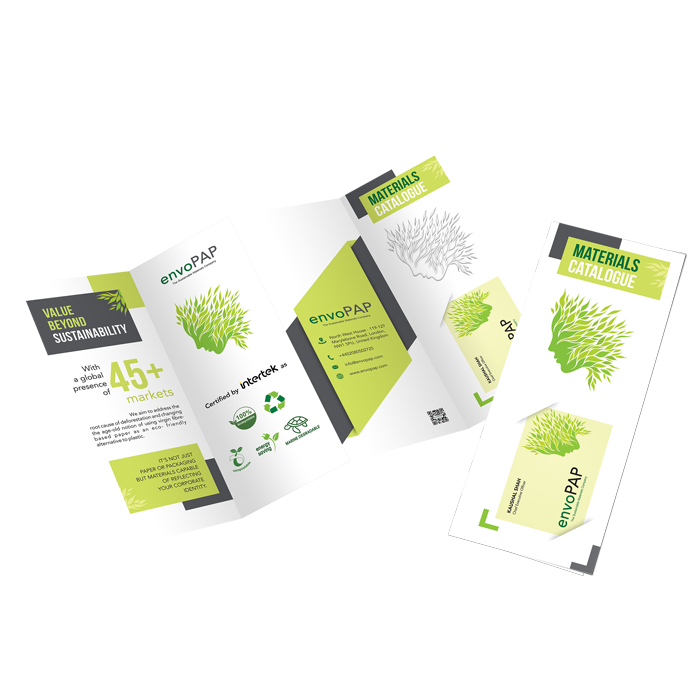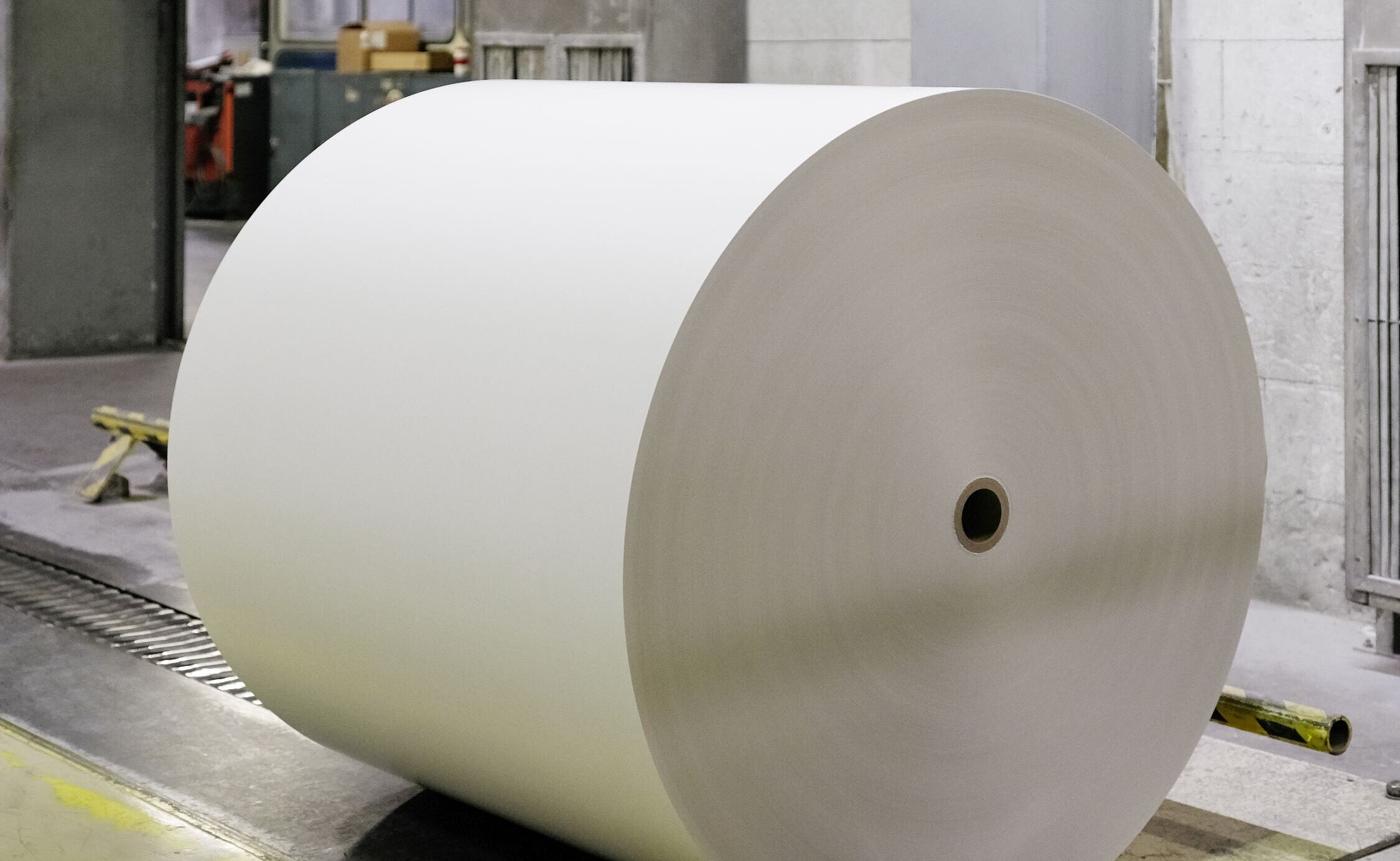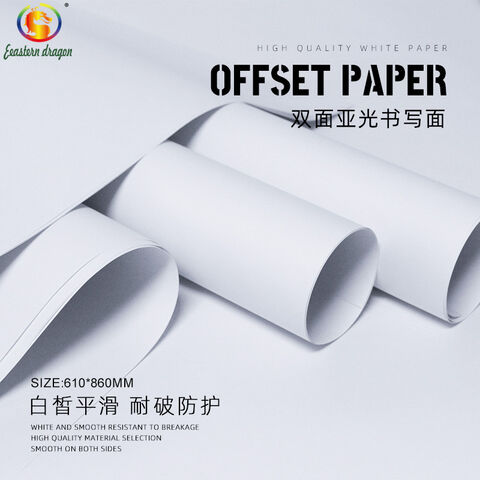What To Look For in Sustainable Offset Paper Suppliers?
What Makes a Supplier of Sustainable Offset Paper Truly Sustainable?
Sustainable offset paper suppliers play a crucial role in promoting environmentally friendly practices in the paper industry. By choosing suppliers who prioritize sustainability, businesses can make a positive impact on the environment and align their values with their paper procurement choices. But what exactly makes a supplier of sustainable offset paper truly sustainable? Let’s explore some key factors to consider when selecting a supplier:
Sustainability Certifications and Standards
One important aspect to consider when choosing a supplier of sustainable offset paper is their certifications and adherence to recognized sustainability standards. Certifications such as the Forest Stewardship Council (FSC), Programme for the Endorsement of Forest Certification (PEFC), and ISO 14001 provide assurance that the paper has been responsibly sourced from well-managed forests. These certifications ensure that the supplier is committed to protecting biodiversity, indigenous rights, and the overall health of forest ecosystems.
Understanding the importance of these certifications and standards is crucial in the selection process. The FSC certification, for example, guarantees that the paper is derived from responsibly managed forests and verified recycled sources. Similarly, the PEFC certification ensures the sustainable management of forests and promotes responsible sourcing practices. ISO 14001 certification focuses on environmental management systems and helps suppliers ensure continuous improvement in their sustainability efforts.
Environmental Impact Measures
Another essential aspect to consider when evaluating sustainable offset paper suppliers is their commitment to reducing environmental impact. This includes measuring and reducing their carbon footprint, implementing water and energy conservation practices, and actively seeking ways to minimize emissions.
Suppliers that prioritize environmental impact reduction often participate in carbon offset programs to neutralize their carbon emissions. This means that for every ton of CO2 equivalent emitted during paper production, an equivalent amount is offset through certified reforestation programs or other carbon reduction projects. It’s important to choose suppliers that are transparent about their emission reduction initiatives and provide clear data on their impact.
Additionally, consider how suppliers manage their water and energy usage. Sustainable offset paper production typically consumes less water compared to traditional virgin paper production. Suppliers that prioritize water conservation practices and implement efficient energy usage can significantly contribute to reducing their environmental footprint.
Sustainable Sourcing Practices
The materials used in paper production are crucial for determining its sustainability. Sustainable offset paper suppliers prioritize the use of recycled and post-consumer fiber content as well as alternative fibers derived from agricultural residues. For example, utilizing waste products like sugarcane bagasse, wheat straw fibers, or other agricultural residues reduces the need for virgin fiber and contributes to waste reduction.
Suppliers that choose alternative fibers and waste materials over traditional wood fibers help reduce pressure on forests and preserve valuable resources. By leveraging agricultural waste that would otherwise be discarded, these suppliers support a circular economy and contribute to a more sustainable paper industry.
Furthermore, sustainable offset paper suppliers often employ zero liquid discharge (ZLD) practices in their production processes. ZLD ensures that no liquid waste is discharged into water bodies during paper manufacturing, minimizing water pollution and environmental degradation.
Choosing a supplier that prioritizes sustainable sourcing practices demonstrates your commitment to reducing deforestation, waste generation, and the overall environmental impact of paper production.
There is a growing demand for sustainable offset paper suppliers as businesses increasingly recognize the importance of environmental responsibility. By selecting suppliers with relevant certifications, a strong commitment to reducing their environmental impact, and sustainable sourcing practices, businesses can contribute to a more sustainable future while meeting their paper procurement needs. Making the conscious choice to support truly sustainable suppliers is a step towards creating a healthier planet for future generations.
Table 1: Comparison of Sustainability Certifications
| Certification | Description |
|---|---|
| Forest Stewardship Council | The FSC certification guarantees that the paper is derived from responsibly managed forests and verified recycled sources. It promotes responsible forest management, protects biodiversity, and ensures the rights of indigenous communities. Choosing suppliers with the FSC certification demonstrates support for sustainable sourcing practices. |
| Programme for the Endorsement | The PEFC certification ensures the sustainable management of forests and promotes responsible sourcing practices. It provides assurance that the paper is sourced from well-managed forests. Suppliers with the PEFC certification contribute to the preservation of natural resources and the overall health of forest ecosystems. |
| of Forest Certification | ISO 14001 certification focuses on environmental management systems and helps suppliers ensure continuous improvement in their sustainability efforts. It demonstrates a commitment to reducing environmental impact and supports the implementation of effective sustainability practices in paper production. |
Table 2: Environmental Impact Measures of Sustainable Offset Paper Suppliers
| Environmental Impact Measure | Description |
|---|---|
| Carbon Footprint | Suppliers actively work towards reducing their carbon footprint by implementing energy-saving technologies, utilizing renewable energy sources, and participating in carbon offset programs. |
| Water Usage | Sustainable suppliers implement practices to reduce water consumption and use energy-efficient machinery, contributing to the conservation of natural resources. |
| Energy Consumption | Suppliers prioritize energy conservation by implementing energy-saving technologies in their production processes, reducing their overall energy consumption. |
| Emissions Reduction Initiatives | Suppliers invest in cleaner production methods, implement waste management programs, and use eco-friendly chemicals to reduce emissions and minimize environmental impact. |
Table 3: Comparison of Raw Materials Used by Sustainable Offset Paper Suppliers
| Raw Materials | Description |
|---|---|
| Recycled and Post-Consumer Fiber Content | Sustainable offset paper suppliers prioritize the use of recycled and post-consumer fiber content in paper production. By utilizing these materials, they reduce the demand for virgin fiber and contribute to waste reduction. |
| Alternative Fibers and Agricultural Residues | Suppliers choose alternative fibers derived from agricultural residues, such as sugarcane bagasse and wheat straw fibers. These fibers minimize the pressure on forests and support a circular economy by utilizing waste materials. |
| Zero Liquid Discharge (ZLD) | Suppliers employ ZLD practices in their production processes to ensure that no liquid waste is discharged into water bodies. This minimizes water pollution and environmental degradation associated with traditional paper manufacturing. |
Conclusion
When selecting a supplier of sustainable offset paper, it’s essential to consider their sustainability certifications, environmental impact measures, and sourcing practices. Certifications like FSC, PEFC, and ISO 14001 ensure responsible forest management and transparent supply chains. Evaluating a supplier’s carbon footprint, water usage, energy consumption, and emissions reduction initiatives will give you insight into their commitment to sustainability. Additionally, sustainable sourcing practices such as the use of recycled and post-consumer fibers, alternative fiber sources like agricultural residue, and Zero Liquid Discharge practices contribute to a supplier’s overall sustainability.
By partnering with a supplier that demonstrates a genuine commitment to sustainability, you can ensure that your offset paper choices align with your environmentally conscious business practices. So, take the time to research and choose a supplier that goes above and beyond to offer truly sustainable offset paper options.
Image 1
Image 2
Image 3
Image 4
Table 1: Comparison of Sustainability Certifications
| Certification | Description |
|---|---|
| Forest Stewardship Council | The FSC certification guarantees that the paper is derived from responsibly managed forests and verified recycled sources. It promotes responsible forest management, protects biodiversity, and ensures the rights of indigenous communities. Choosing suppliers with the FSC certification demonstrates support for sustainable sourcing practices. |
| Programme for the Endorsement | The PEFC certification ensures the sustainable management of forests and promotes responsible sourcing practices. It provides assurance that the paper is sourced from well-managed forests. Suppliers with the PEFC certification contribute to the preservation of natural resources and the overall health of forest ecosystems. |
| of Forest Certification | ISO 14001 certification focuses on environmental management systems and helps suppliers ensure continuous improvement in their sustainability efforts. It demonstrates a commitment to reducing environmental impact and supports the implementation of effective sustainability practices in paper production. |
Table 2: Environmental Impact Measures of Sustainable Offset Paper Suppliers
| Environmental Impact Measure | Description |
|---|---|
| Carbon Footprint | Suppliers actively work towards reducing their carbon footprint by implementing energy-saving technologies, utilizing renewable energy sources, and participating in carbon offset programs. |
| Water Usage | Sustainable suppliers implement practices to reduce water consumption and use energy-efficient machinery, contributing to the conservation of natural resources. |
| Energy Consumption | Suppliers prioritize energy conservation by implementing energy-saving technologies in their production processes, reducing their overall energy consumption. |
| Emissions Reduction Initiatives | Suppliers invest in cleaner production methods, implement waste management programs, and use eco-friendly chemicals to reduce emissions and minimize environmental impact. |
Table 3: Comparison of Raw Materials Used by Sustainable Offset Paper Suppliers
| Raw Materials | Description |
|---|---|
| Recycled and Post-Consumer Fiber Content | Sustainable offset paper suppliers prioritize the use of recycled and post-consumer fiber content in paper production. By utilizing these materials, they reduce the demand for virgin fiber and contribute to waste reduction. |
| Alternative Fibers and Agricultural Residues | Suppliers choose alternative fibers derived from agricultural residues, such as sugarcane bagasse and wheat straw fibers. These fibers minimize the pressure on forests and support a circular economy by utilizing waste materials. |
| Zero Liquid Discharge (ZLD) | Suppliers employ ZLD practices in their production processes to ensure that no liquid waste is discharged into water bodies. This minimizes water pollution and environmental degradation associated with traditional paper manufacturing. |
How to Choose the Right Sustainable Offset Paper Supplier for Your Business?
In today’s environmentally conscious world, businesses are increasingly looking for sustainable alternatives in every aspect of their operations. One area where sustainability can be prioritized is in the choice of paper suppliers. Sustainable offset paper suppliers offer eco-friendly alternatives that minimize environmental impact without compromising on quality. But what factors should you consider when selecting a supplier of sustainable offset paper? Let’s explore the key elements that make a supplier truly sustainable.
Supplier Reputation and Customer Reviews
Cost and Pricing Details
Geographical Availability
Product Specifications and Range
It is important to consider the types of paper and product specifications offered by different suppliers. Look for a supplier that offers a wide range of sustainable offset paper options to meet your business’s specific needs. Consider factors such as paper weight, brightness levels, and quality consistency.
Different projects may require different types of paper, so having a diverse range of options is crucial. For example, brochures and high-quality magazines may require paper with higher brightness and opacity levels, while general printing needs may be met with standard paper options.
In addition to paper specifications, it is also beneficial to assess the quality and performance of the paper. Look for certifications or assessments from reputable organizations such as BLI’s Jam Free Certification, which ensures that the paper is reliable, dust-free, and performs consistently in printing equipment.
By considering these factors – supplier reputation and customer reviews, cost and pricing details, geographical availability, and product specifications and range – you will be better equipped to choose the right sustainable offset paper supplier for your business. Remember to prioritize suppliers that align with your sustainability goals and can provide high-quality, eco-friendly paper products to meet your specific printing needs.
Benefits of Using Sustainable Offset Paper for Your Business
In today’s world, the environmental impact of businesses is a growing concern for both consumers and organizations. As a result, many businesses are seeking sustainable alternatives in their operations, including the use of eco-friendly materials. When it comes to paper products, sustainable offset paper offers a range of benefits that can positively impact your business.
Environmental Benefits
Using sustainable offset paper helps reduce the environmental impact of your business in several ways:
- Reduced carbon footprint and greenhouse gas emissions: Sustainable offset paper is produced using environmentally friendly practices that emit fewer greenhouse gases and have a lower carbon footprint compared to traditional paper production methods. By utilizing materials such as recycled fibers or agricultural waste, the production of sustainable offset paper leads to significantly lower emissions.
- Preservation of forests and natural resources: By opting for sustainable offset paper, you contribute to the preservation of forests and natural resources. Traditional paper production relies heavily on the harvesting of trees, which has adverse effects on ecosystems and biodiversity. Choosing sustainable offset paper helps protect forests and their invaluable role in maintaining environmental equilibrium.
- Waste reduction and recycling impact: Sustainable offset paper is often made from recycled fibers or agricultural waste. By utilizing these materials, the demand for virgin fiber is reduced, which, in turn, reduces the amount of waste being sent to landfills. Additionally, sustainable offset paper can be recycled again, extending its lifecycle and further reducing waste.
Operational Benefits
In addition to the environmental benefits, using sustainable offset paper offers operational advantages for your business:
- Enhancing company’s green credentials and brand reputation: By adopting sustainable practices such as using eco-friendly paper, your business demonstrates a commitment to environmental responsibility. This can enhance your company’s green credentials, increase brand reputation, and attract environmentally conscious consumers who value sustainability.
- Compliance with environmental regulations and policies: Many regions have implemented environmental regulations and policies to promote sustainability. Using sustainable offset paper ensures compliance with these regulations, allowing your business to operate within legal frameworks while minimizing its environmental impact.
- Incentives and recognition from industry organizations: When you choose to use sustainable offset paper, you may be eligible for incentives or recognition from industry organizations that promote sustainability. These incentives can include grants, awards, or certifications that acknowledge your commitment to sustainability.
Performance and Practical Benefits
Using sustainable offset paper also offers various performance and practical benefits for your business:
- Quality consistency and performance: Sustainable offset paper is designed to meet high-quality standards, ensuring consistent performance across different printing applications. Whether you’re printing brochures, pamphlets, or other materials, you can expect reliable printability and excellent image quality.
- Versatility for various applications: Sustainable offset paper is available in a range of weights and sizes, making it suitable for various printing needs. Whether you require lightweight paper for flyers or sturdy paper for magazines, you can find sustainable options that meet your specific application requirements.
- Potential for reduced operational costs over time: While sustainable offset paper may initially have a similar price point compared to traditional paper, the potential for reduced operational costs over time can provide long-term savings. By implementing sustainable practices and utilizing eco-friendly materials, you may be able to optimize your production processes, improve efficiency, and reduce costs.
In summary, using sustainable offset paper for your business offers numerous benefits. It not only contributes to a healthier environment by reducing carbon emissions and preserving forests but also provides operational advantages, including enhanced brand reputation and compliance with environmental regulations. Additionally, you can enjoy performance benefits, such as reliable print quality and versatility for various applications. By choosing sustainable offset paper, your business can make a positive impact on both the environment and its bottom line.
Please let me know if you need any further assistance!
FAQs about Sustainable Offset Paper Suppliers
What certifications should a sustainable offset paper supplier have?
To be considered sustainable, suppliers should have certifications such as Forest Stewardship Council (FSC), Programme for the Endorsement of Forest Certification (PEFC), and ISO 14001.
How do sustainable offset paper suppliers reduce their environmental impact?
Sustainable offset paper suppliers reduce their environmental impact by implementing carbon footprint reduction measures, participating in carbon offset programs, and employing water and energy conservation practices.
What sustainable sourcing practices should I look for in a supplier?
In a sustainable offset paper supplier, you should look for the use of recycled and post-consumer fibers, alternative fibers from agricultural residues, and Zero Liquid Discharge (ZLD) practices.
Why is it important to choose a supplier with strong environmental impact measures?
Choosing a supplier with strong environmental impact measures ensures that the supplier is committed to minimizing greenhouse gas emissions, conserving natural resources, and reducing overall environmental footprint.
How can using sustainable offset paper benefit my business?
Using sustainable offset paper can enhance your company’s green credentials, ensure compliance with environmental regulations, and provide incentives or recognition from industry organizations.
Choosing sustainable offset paper suppliers is vital for both the environment and your business. We explored key certifications to look for, assessed environmental impact measures, and discussed sustainable sourcing practices. We also covered how to select the right supplier, considering reputation, cost, location, and product specs. Lastly, we reviewed the environmental, operational, and performance benefits of using sustainable paper.
In conclusion, switching to sustainable paper supports your eco-goals and boosts your brand. Make informed choices to find the best supplier and enjoy the benefits of environmental stewardship.





